About Cosmic Cable Ltd.
Cosmic Cable is the lost cause of a post-bureaucratic telephone network provider mostly run by a crew of the best rogue technicians.
Founded in 2016 as an alternative to the bad mobile network at Lärz, Germany, it provides the most stylish telephone booths at both Fusion Festival and at.tension Festival to connect participants. The telephone network is complemented by additional well-known Cosmic Cable services like the “Status Box” which provides asynchronous communication for guests as well as yearly changing entertainment options.
ARTWORKS
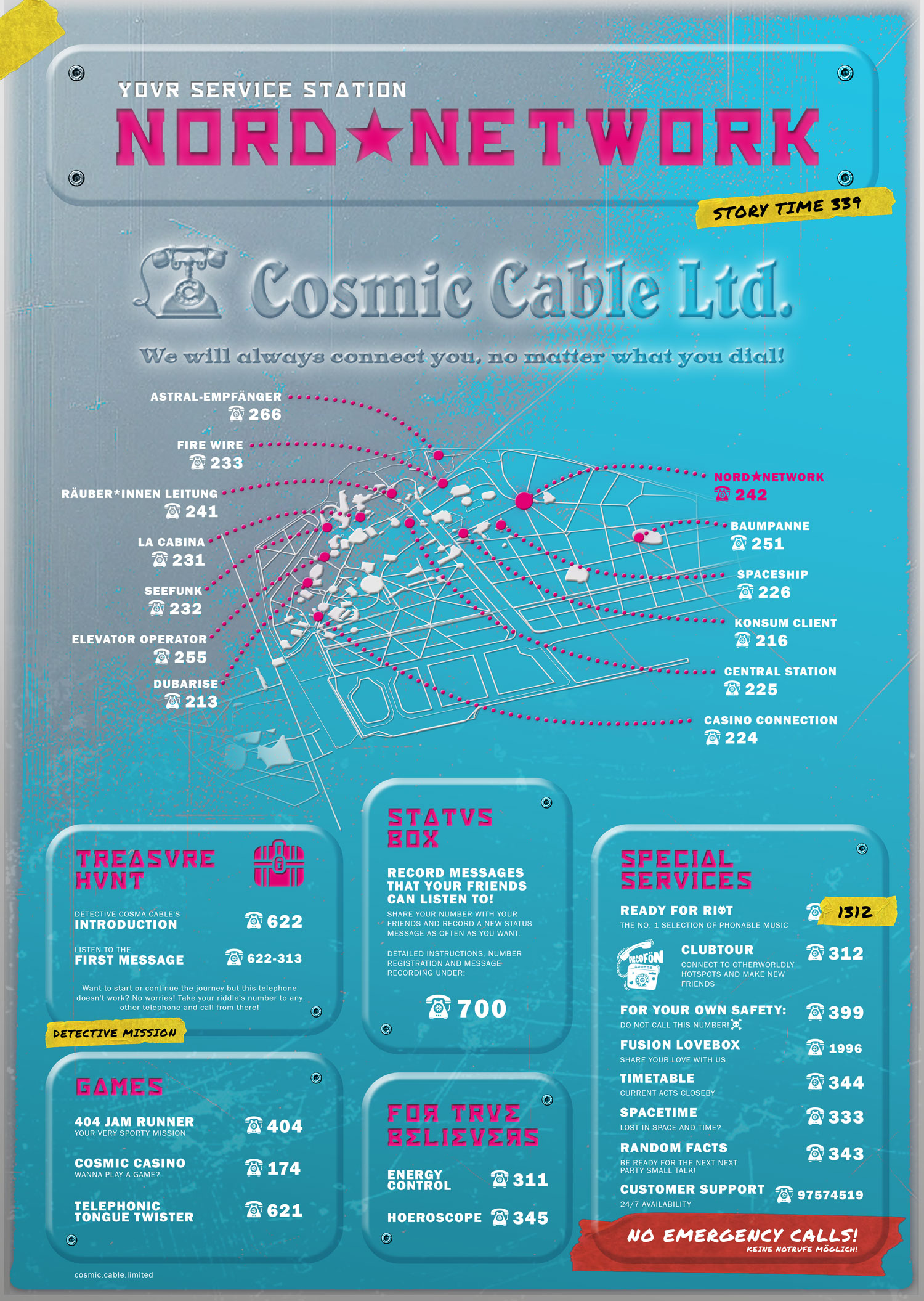
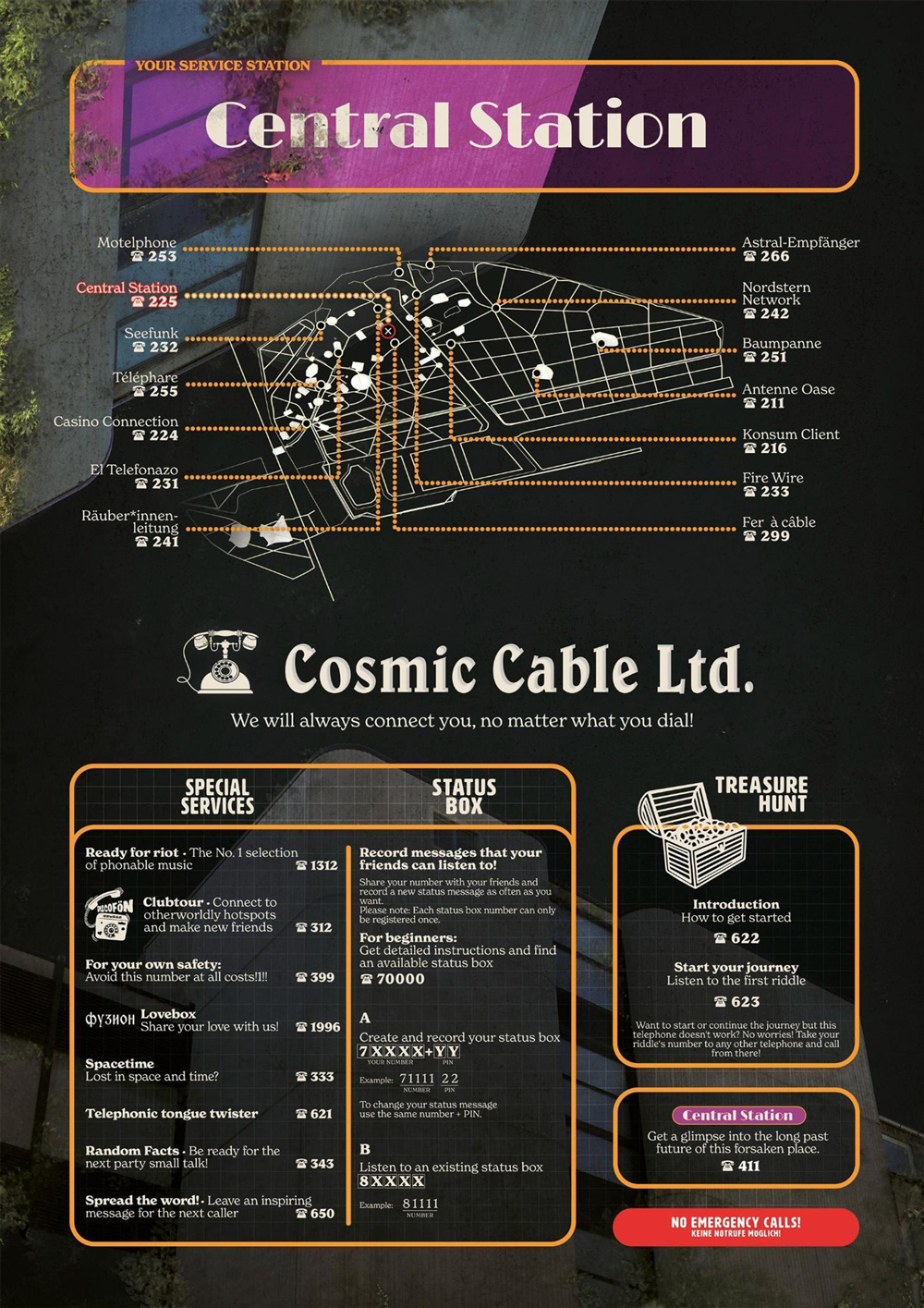
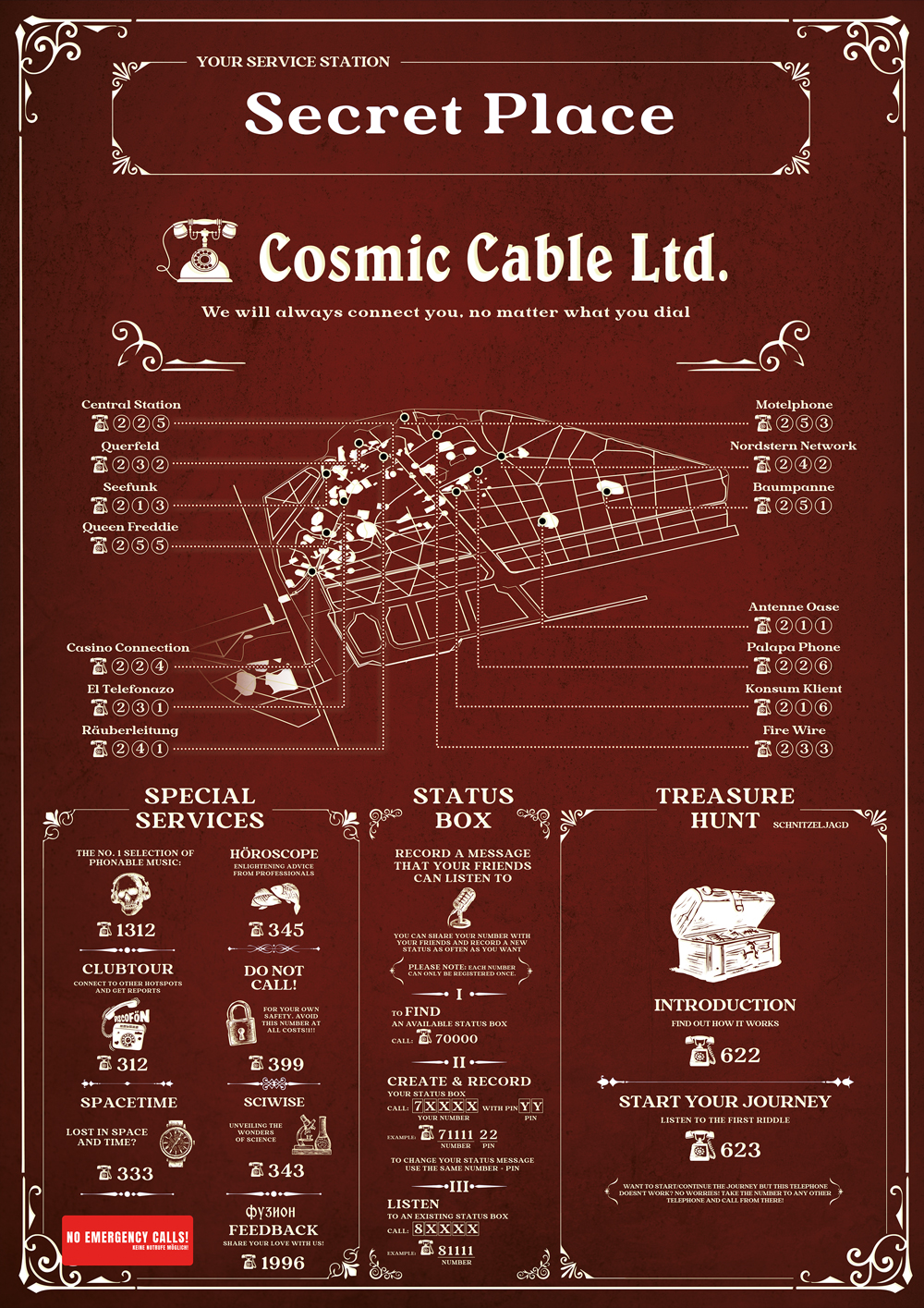
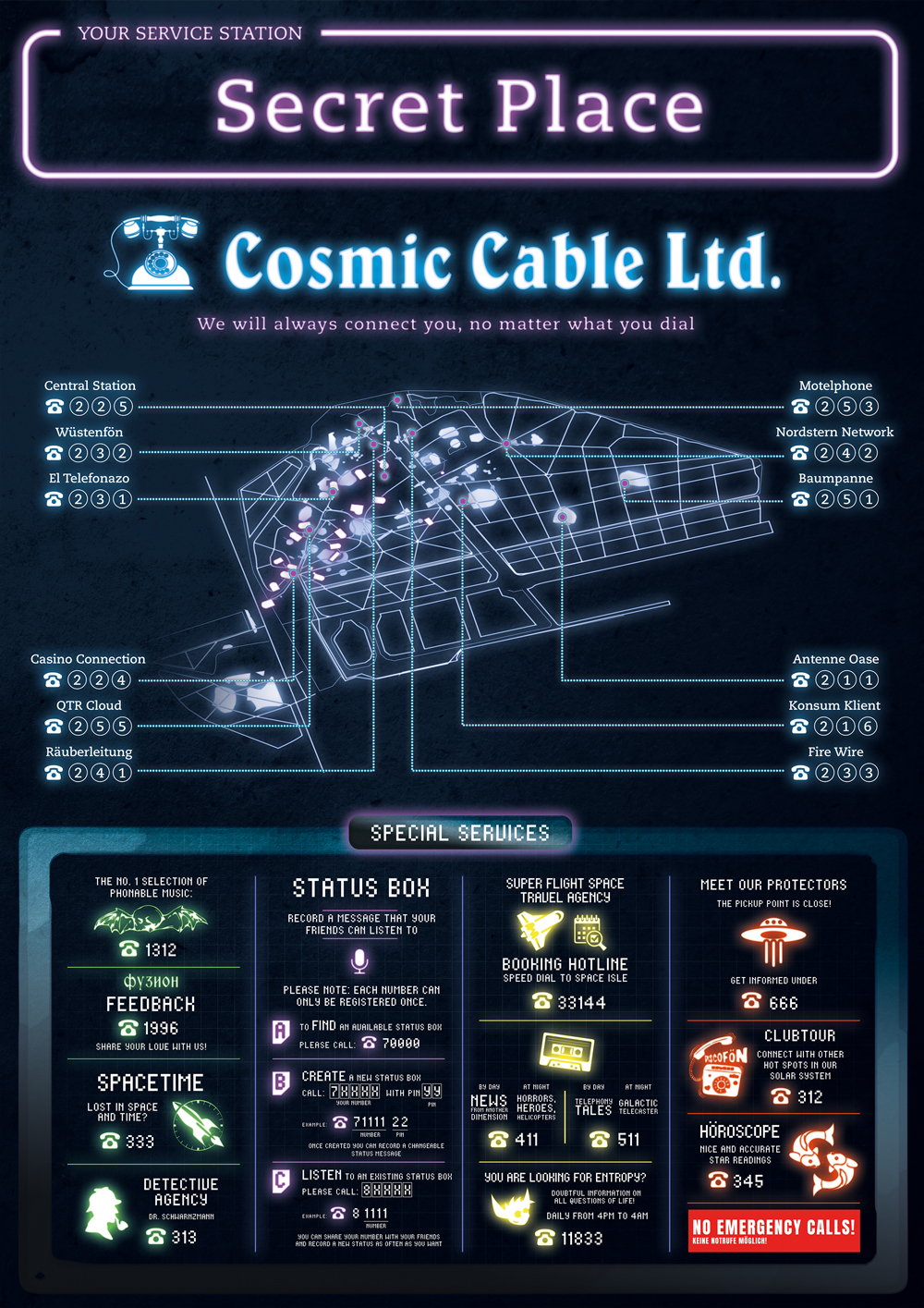
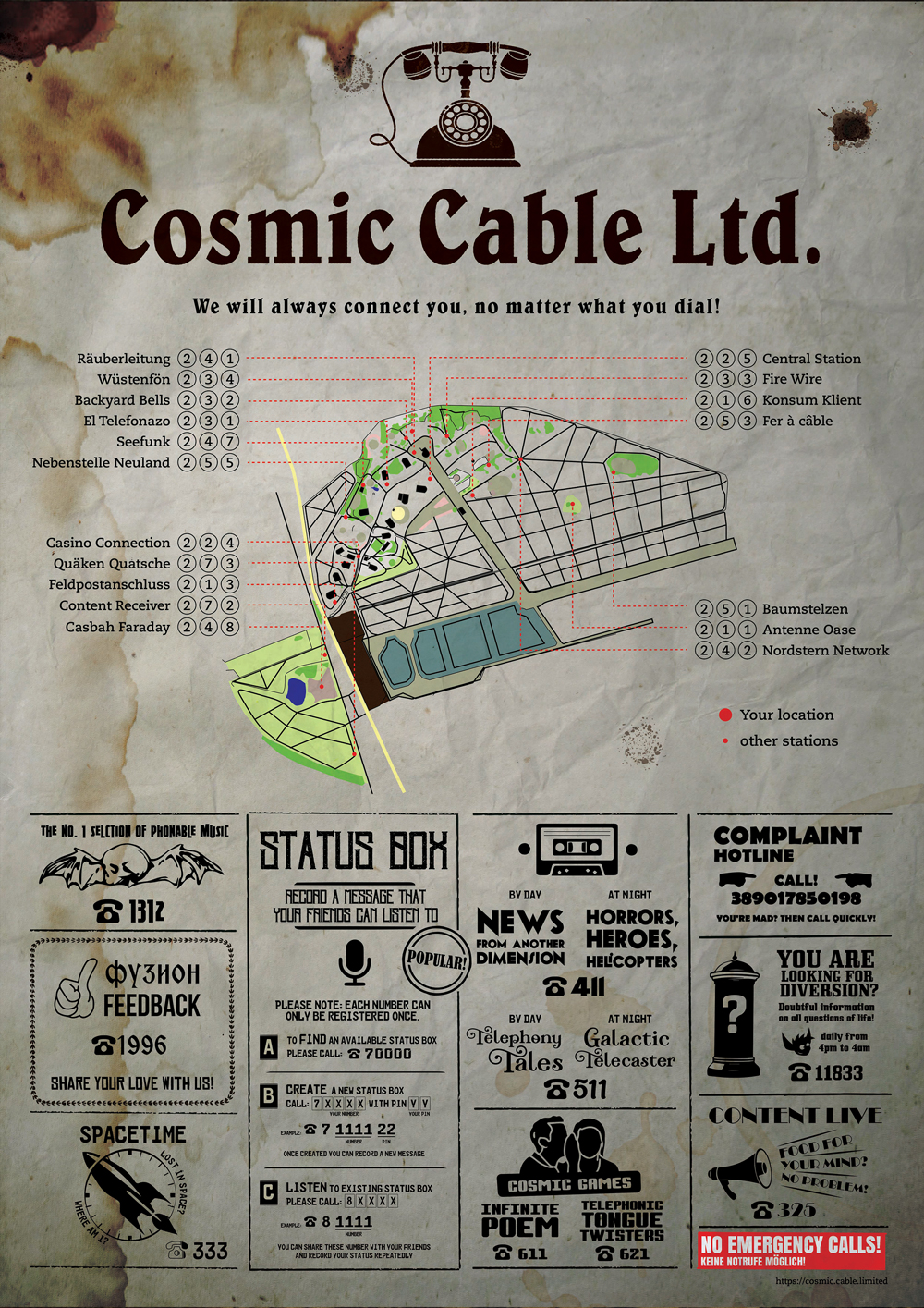
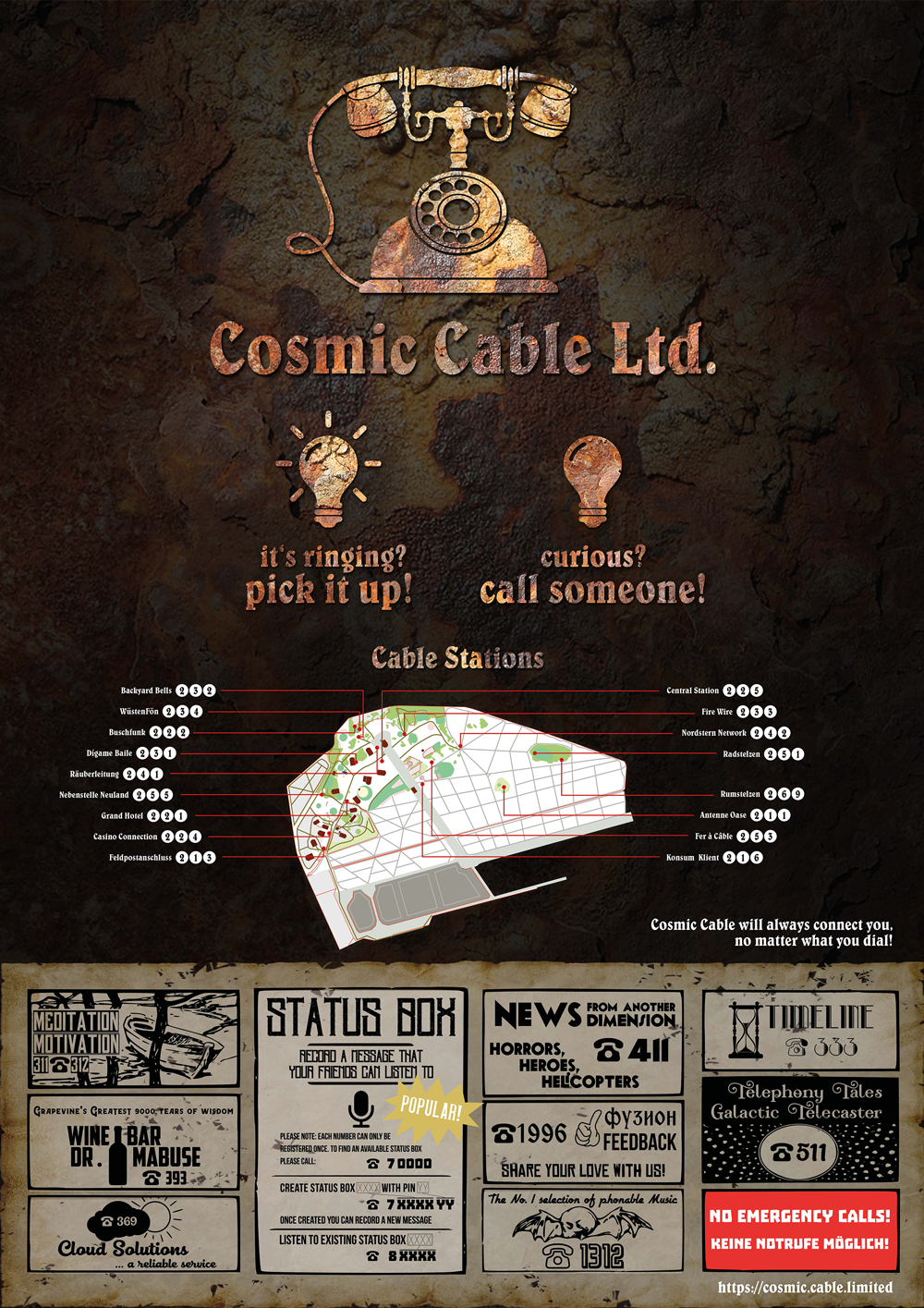
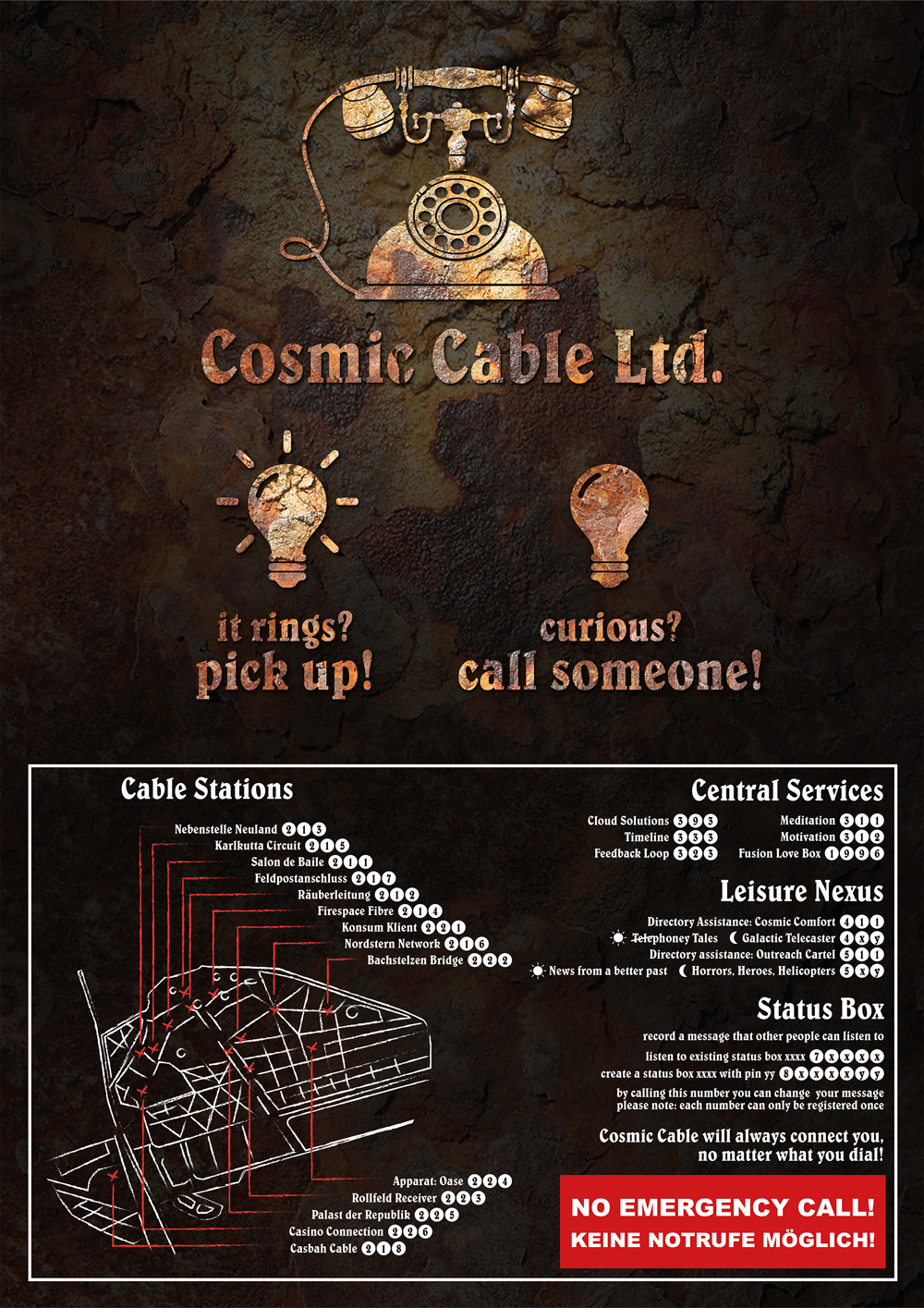
Fusion
IMPRESSIONS
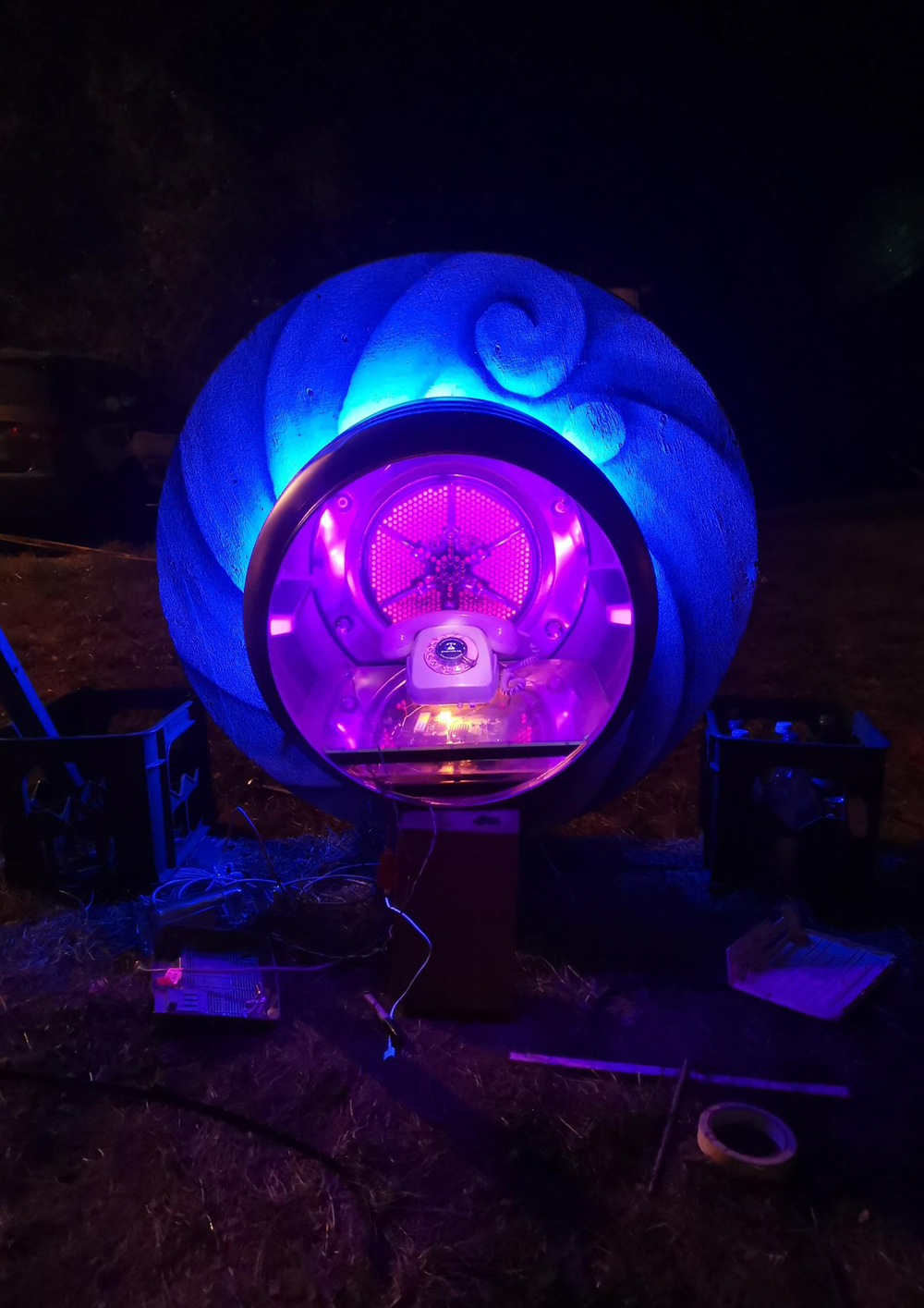
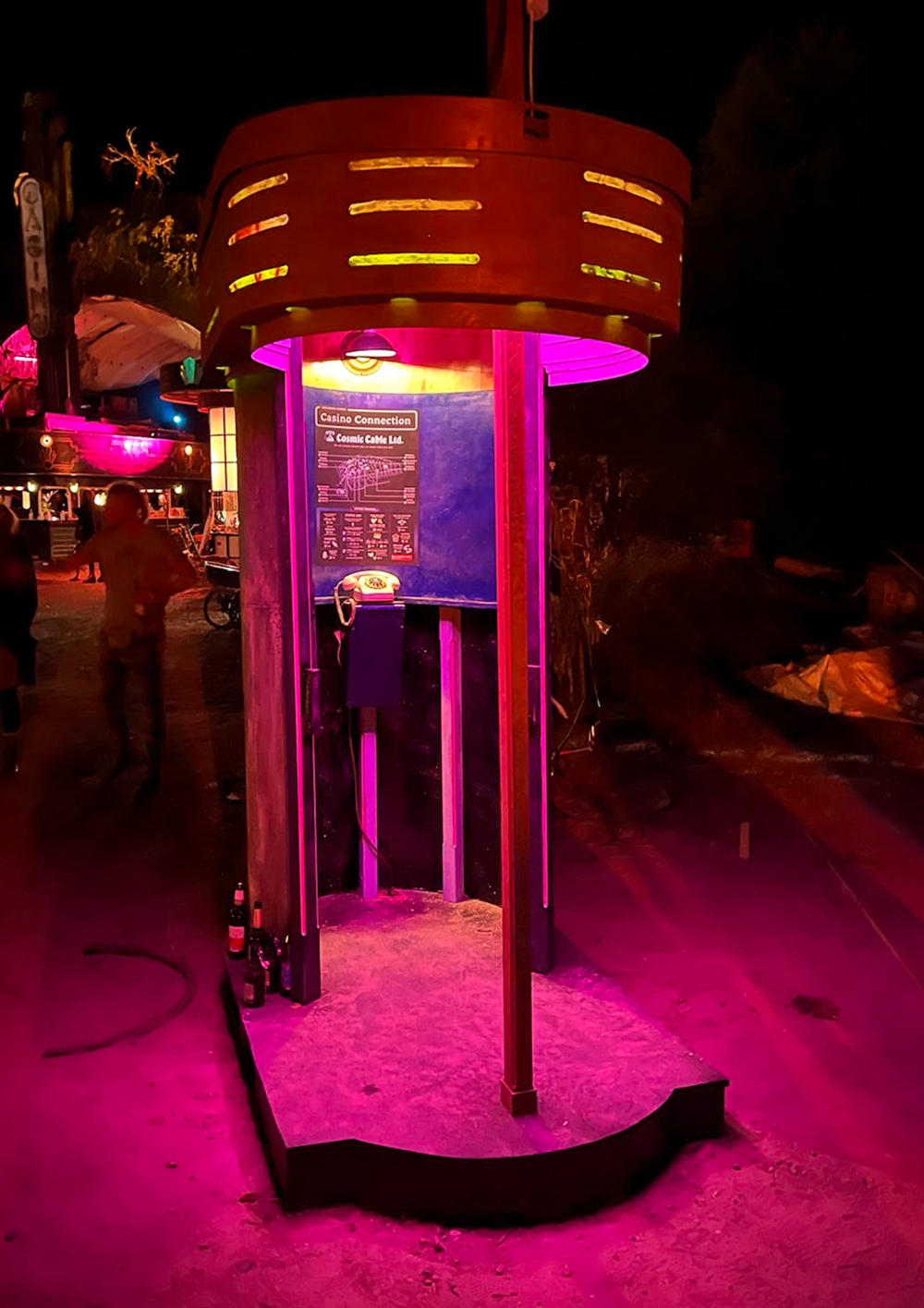
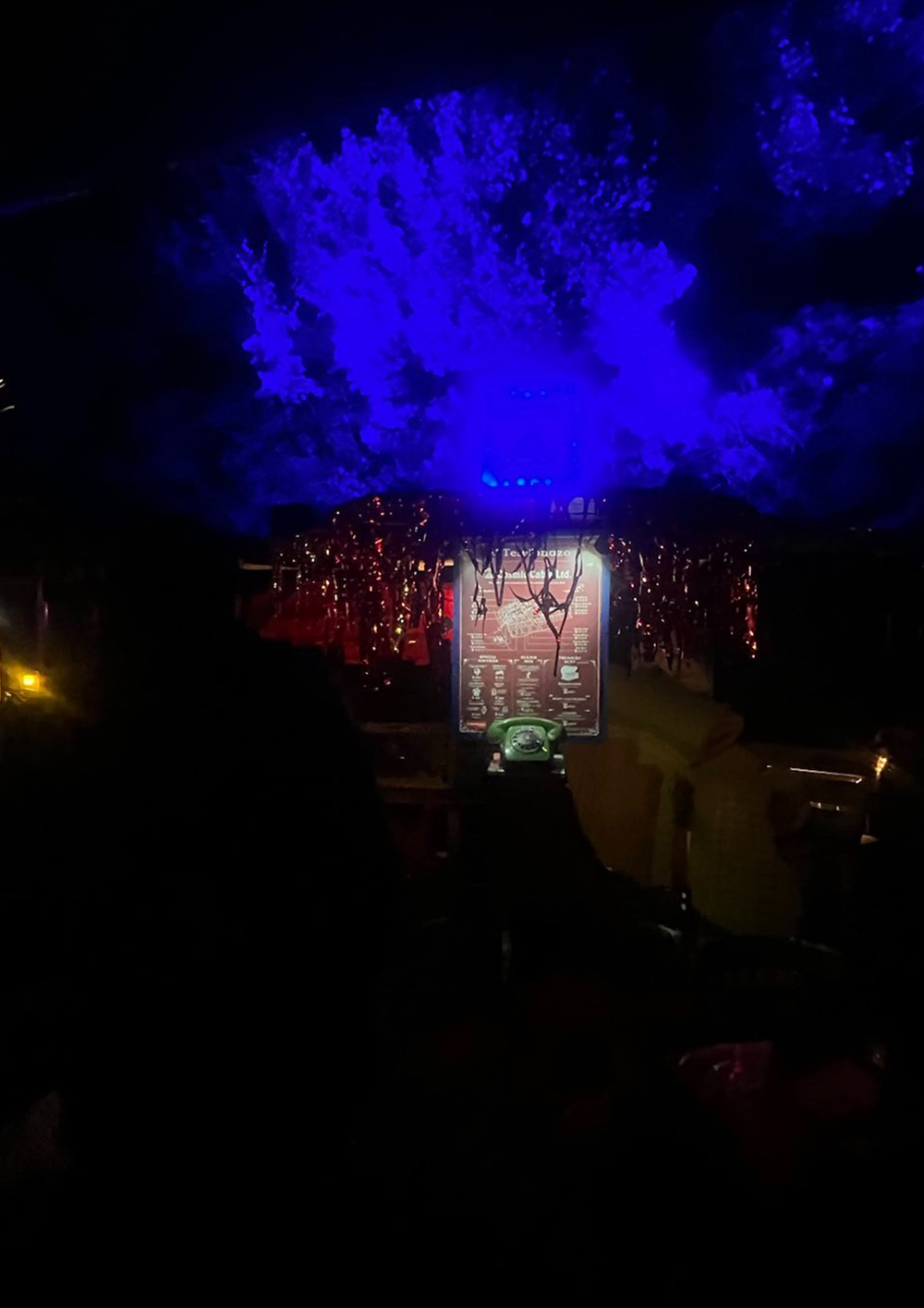
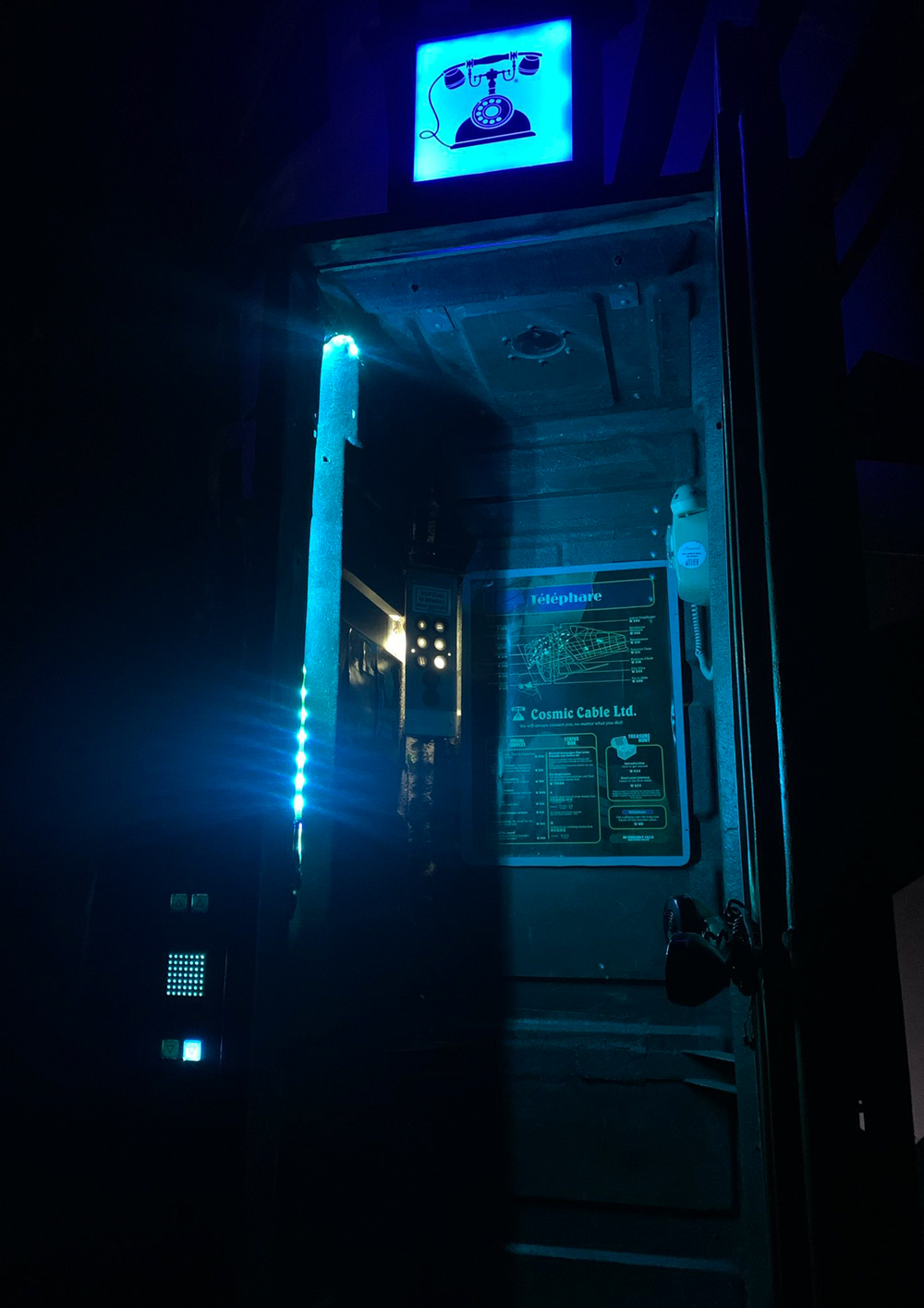
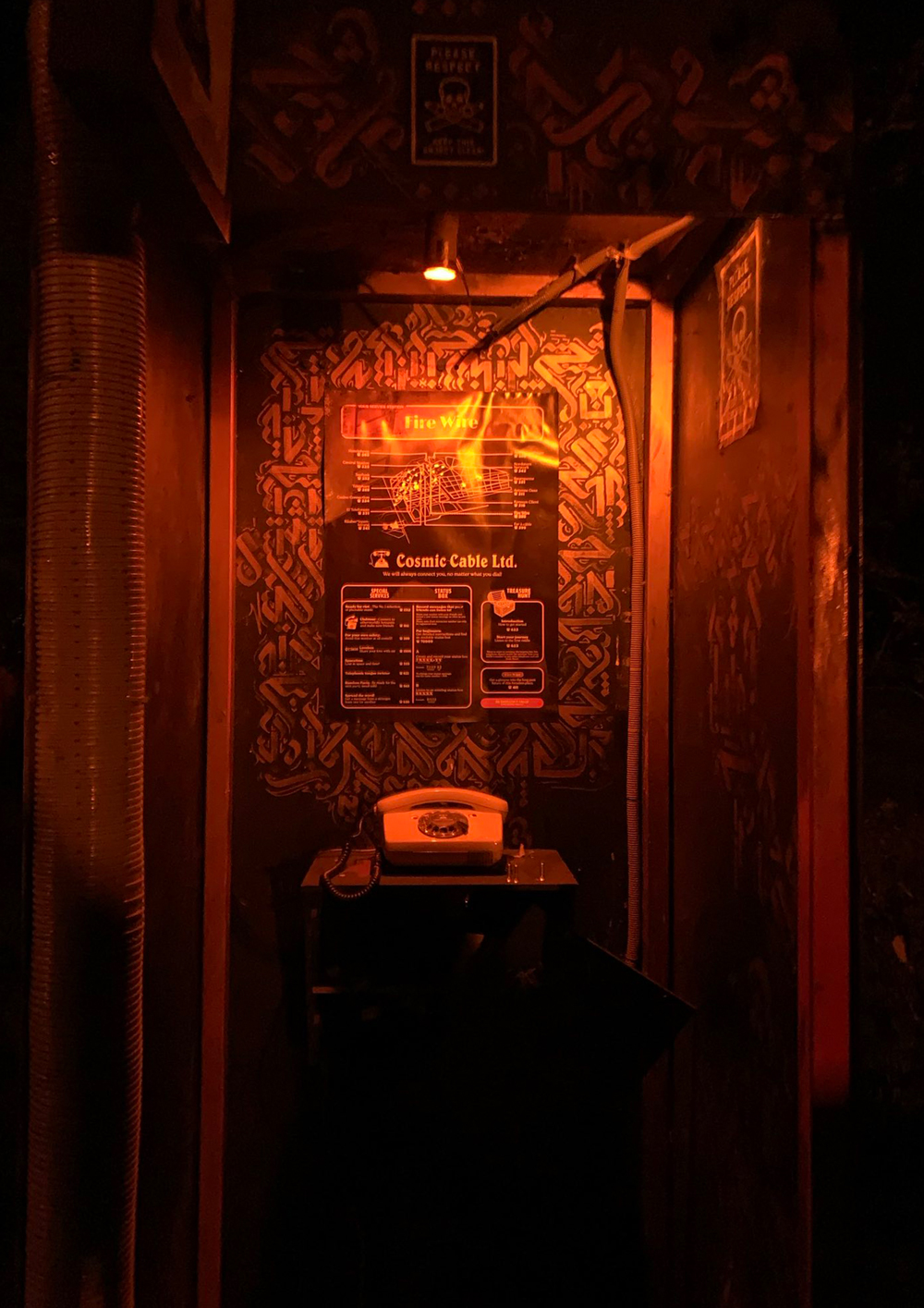
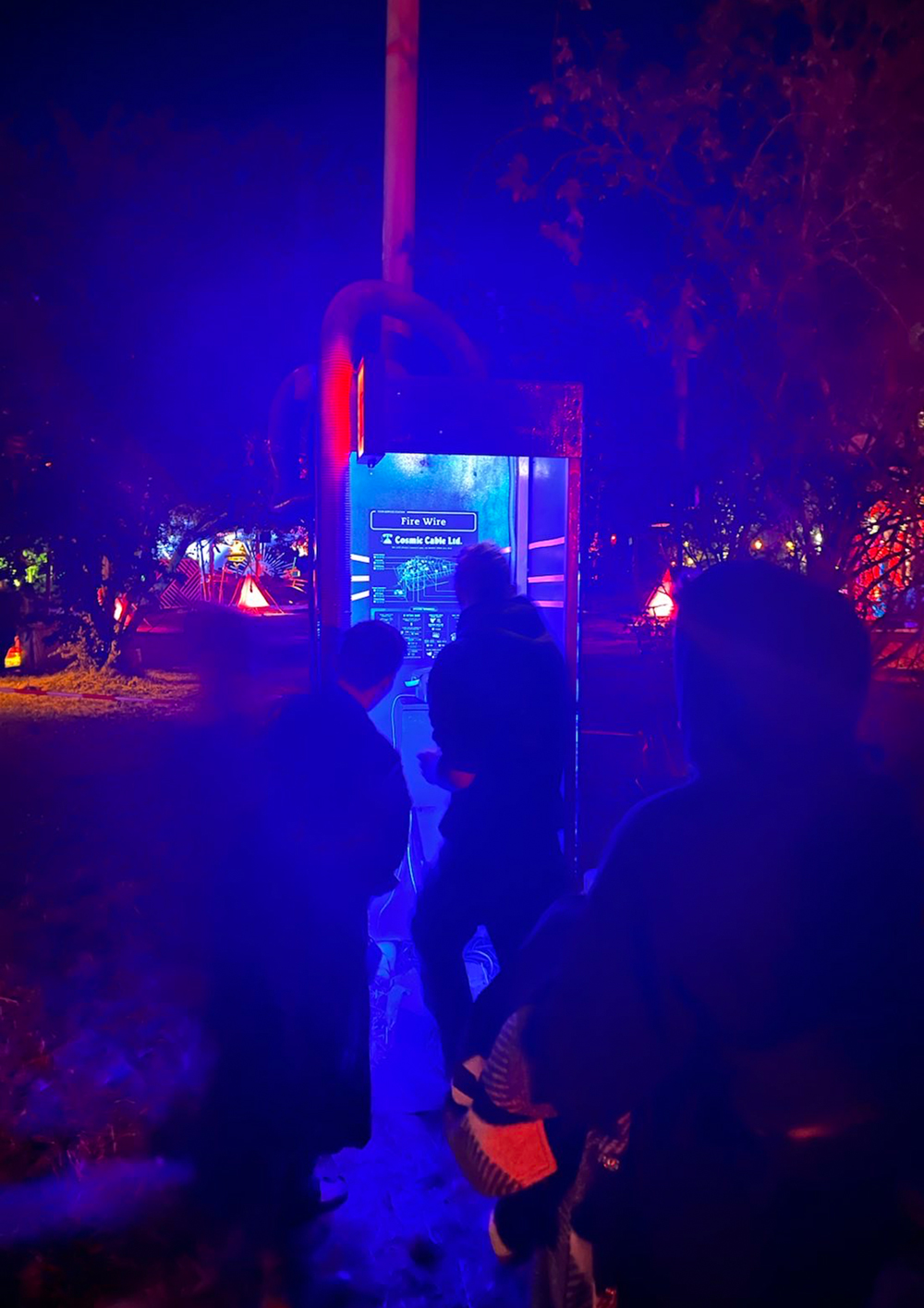
Technical Setup
Within the Cosmic Cable network, everything starts with a classic rotary dial telephone. Since building a whole analog telephone network is very time-consuming, we initially used old Fritz!Box devices (Texas Instruments AR7 single-core MIPS4K SoC with Infineon SLICs) to adapt the telephones to a TCP/IP-based network. From then on, we used all kinds of standard networking gear. On the festival site, we often use Ubiquiti gear to establish radio links when no cable links are available. As a software PBX, we run an Asterisk setup, which implements the service features that Cosmic Cable offers. The configuration is publicly available on GitHub.
Another important part of attractive telephone booths is the audiovisual ringing, which combines the classic ringtone with other effects such as blinking lights and a flamethrower. To trigger such events, we have used two different concepts over the years.
First, we used custom relay and driver PCBs connected to the second analog port on the Fritz!Box. The Asterisk server then automatically called the corresponding number in response to specific events. We developed our so-called 'Mystery Box', which features an analog telephone pass-through and a 12V output that toggles continuously while the line is ringing. The box also provides connection terminals for 12V-powered lighting as well as a passive PoE injector to power the Nanostations.
Although rotary dial phones are awesome, they come with significant limitations. The most important thing is to adapt them to a digital network in a simple but flexible way. The old Fritz!Boxes were cheap and easy to acquire, but configuration was impossible to automate; there was no software support; and — most annoyingly — once dialing was complete, you couldn't enter additional numbers, preventing the use of interactive menus.
We therefore started to use more and more new and even cheaper router boxes (Arcadyan ARV7506PW11 aka Alice/O2 IAD 4421, based on Lantiq Danube dual-core MIPS34KEc SoC with Infineon SLICs) which can be flashed with up-to-date open-source firmware based on OpenWrt/Linux. This allows us to run Asterisk on the device itself and control almost every aspect of the telephony stack, overcoming the limitations of the ancient Fritz!Box's proprietary firmware. In addition, we gained a USB 2.0 port as well as a Ralink Rt3592 802.11n 2.4 GHz WiFi chip.
After an initial test run in 2024, we replaced all Fritz!Boxes and began working on a new revision of the Mystery Box, which, instead of being a simple relay hooked to an analog phone line, is now based on an ESP32 microcontroller, connects via USB, and provides all sorts of fancy features, including the control of LED pixels and DMX gear.
During the events, we also visualize the ongoing phone calls on a map. See the GitHub repository at github.com/dronus/asterisk_vis.